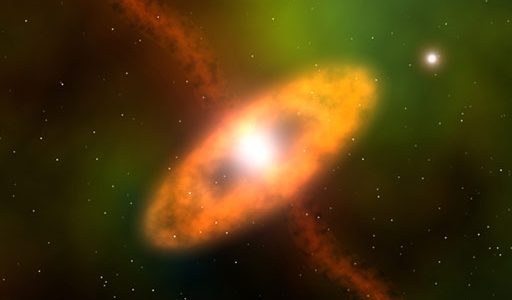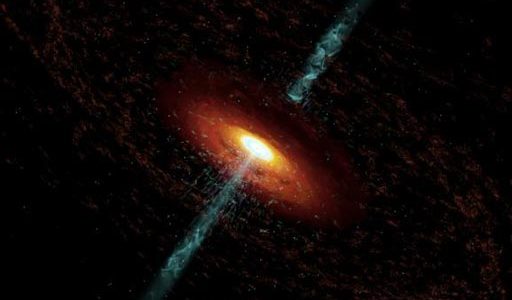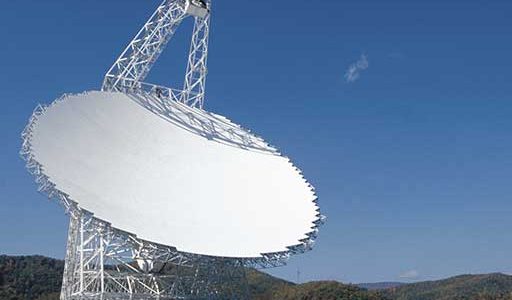Latest NRAO News
News is managed by NRAO News & Public Information. Questions about News? Have a story to share? Want to interview a scientist or create new media about our telescopes?

Astronomers using the National Science Foundation’s Very Long Baseline Array (VLBA) radio telescope have found that an aging star is spewing narrow, rotating streams of water molecules into space, like a jerking garden hose that has escaped its owner’s grasp.

Scientists have caught a supermassive black hole in a distant galaxy in the act of spurting energy into a jet of electrons and magnetic fields four distinct times in the past three years, a celestial take on a Yellowstone geyser.

Astronomers have completed a 5-year campaign to monitor continuously radio flares from two groups of binary star systems. This survey is of special interest because it provides evidence that certain binary star systems have predictable activity cycles like our Sun.

Astronomers using the National Science Foundation’s newly commissioned Green Bank Telescope have detected remarkably faint radio signals from an 820 year-old pulsar, making it the youngest radio-emitting pulsar known.

A NASA Astronaut who carried a flag bearing the logo of the National Radio Astronomy Observatory on last month’s Shuttle flight returned that flag to the observatory on Friday, April 12, at a ceremony in Socorro.

Ethylene glycol, the chemical commonly used as automobile antifreeze, was discovered recently in a massive interstellar cloud of dust and gas near the center of the Milky Way Galaxy. Scientists used the National Science Foundation’s (NSF) 12 Meter Radio Telescope to detect this organic molecule.





